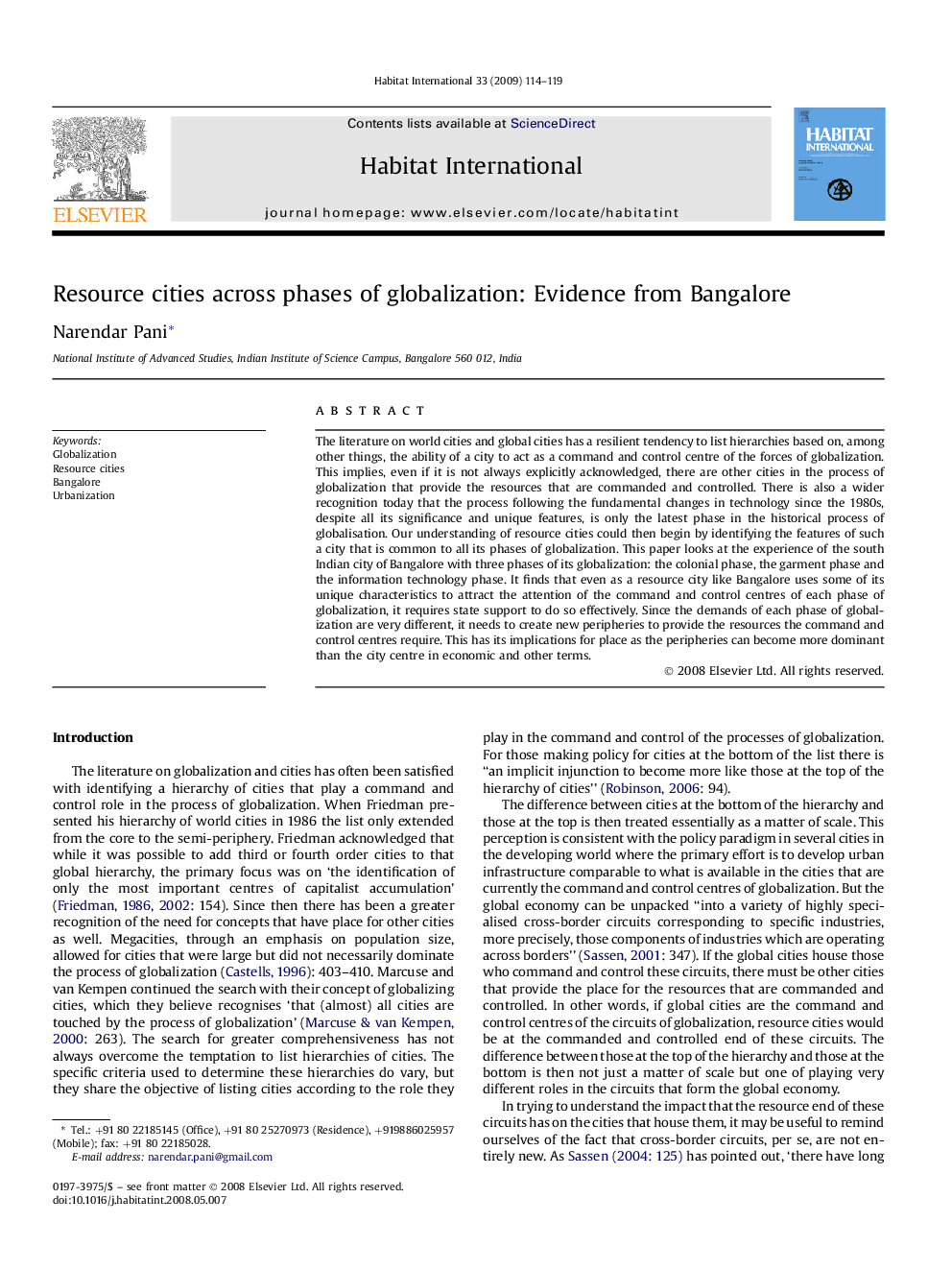| Article ID | Journal | Published Year | Pages | File Type |
|---|---|---|---|---|
| 1048485 | Habitat International | 2009 | 6 Pages |
The literature on world cities and global cities has a resilient tendency to list hierarchies based on, among other things, the ability of a city to act as a command and control centre of the forces of globalization. This implies, even if it is not always explicitly acknowledged, there are other cities in the process of globalization that provide the resources that are commanded and controlled. There is also a wider recognition today that the process following the fundamental changes in technology since the 1980s, despite all its significance and unique features, is only the latest phase in the historical process of globalisation. Our understanding of resource cities could then begin by identifying the features of such a city that is common to all its phases of globalization. This paper looks at the experience of the south Indian city of Bangalore with three phases of its globalization: the colonial phase, the garment phase and the information technology phase. It finds that even as a resource city like Bangalore uses some of its unique characteristics to attract the attention of the command and control centres of each phase of globalization, it requires state support to do so effectively. Since the demands of each phase of globalization are very different, it needs to create new peripheries to provide the resources the command and control centres require. This has its implications for place as the peripheries can become more dominant than the city centre in economic and other terms.
